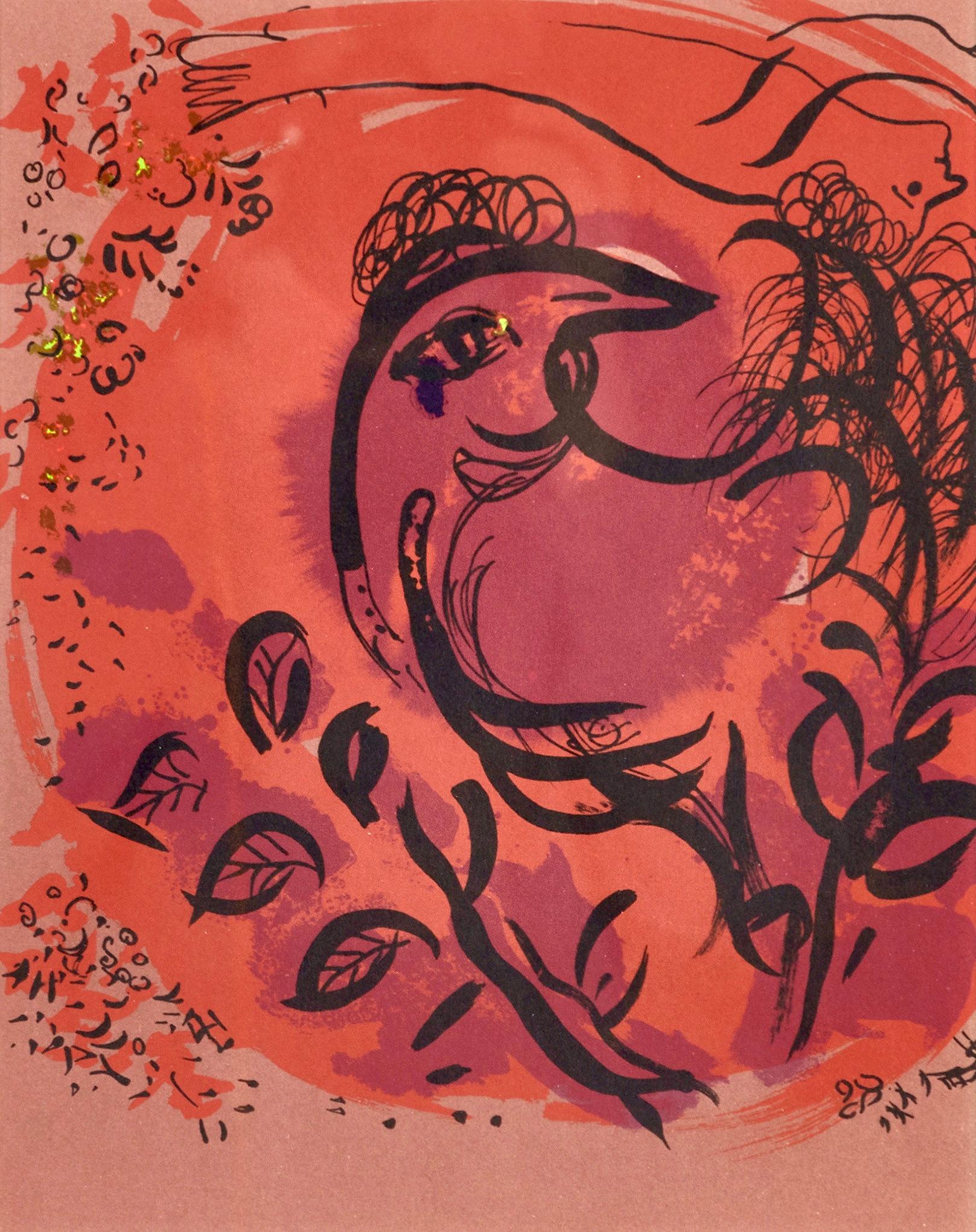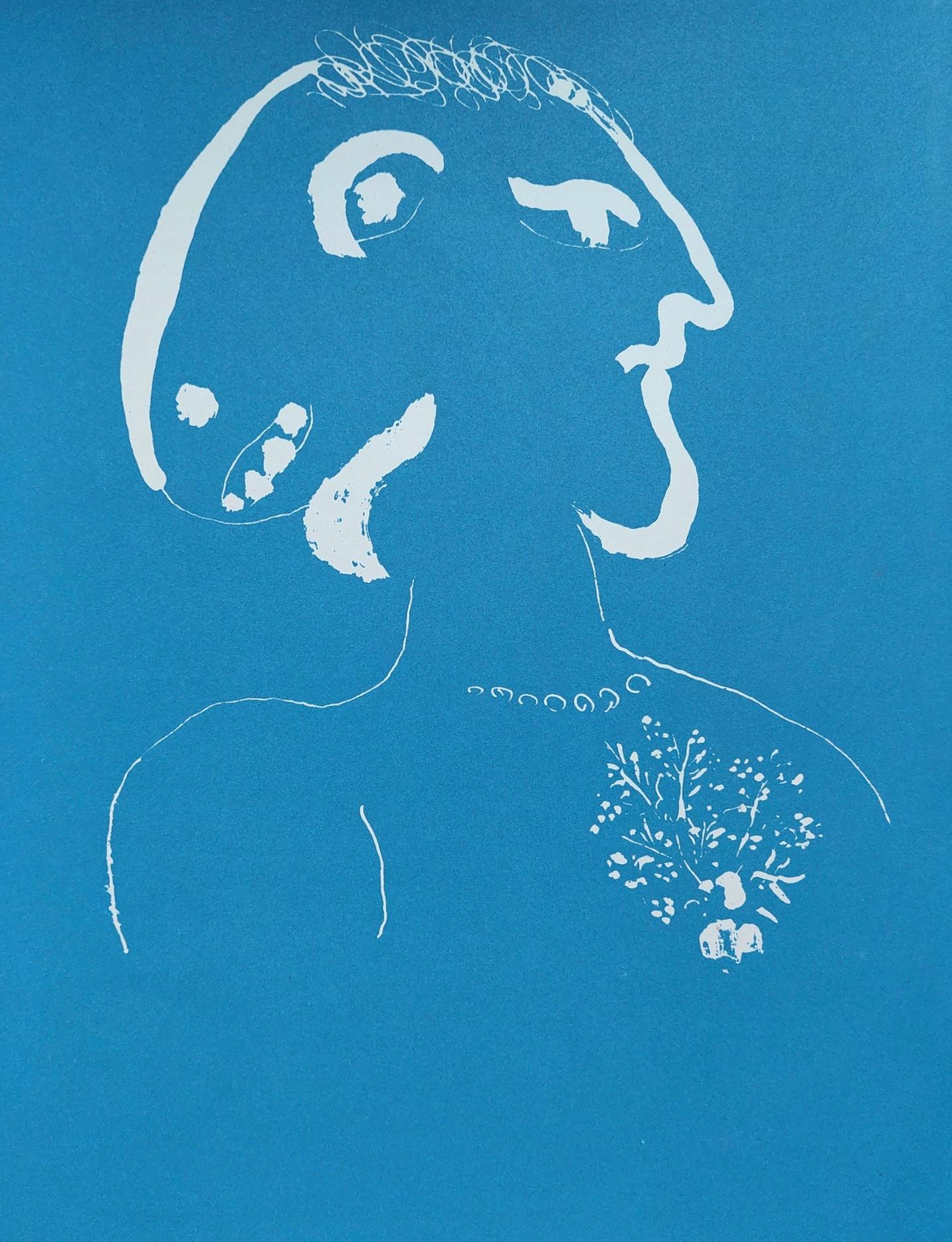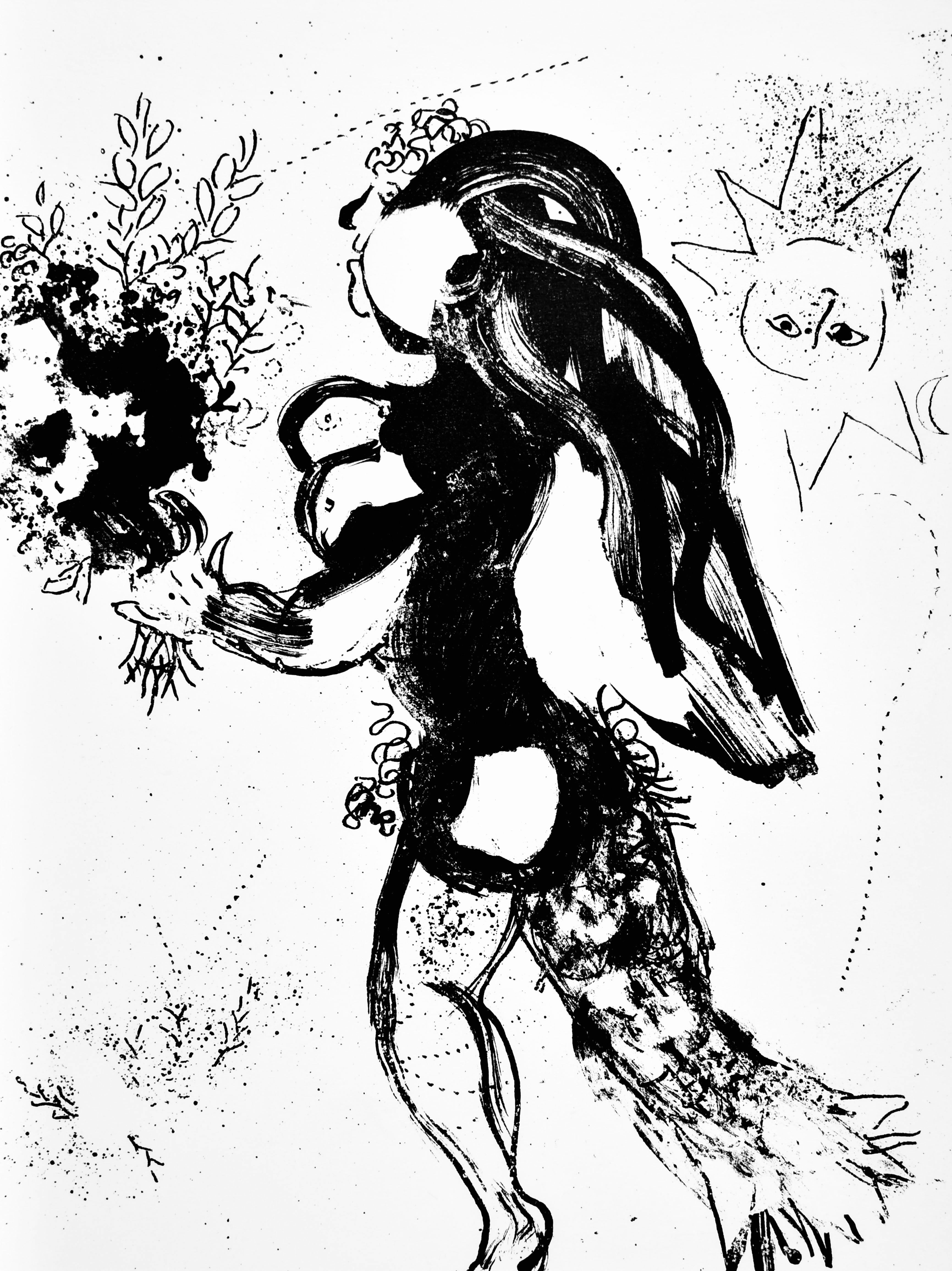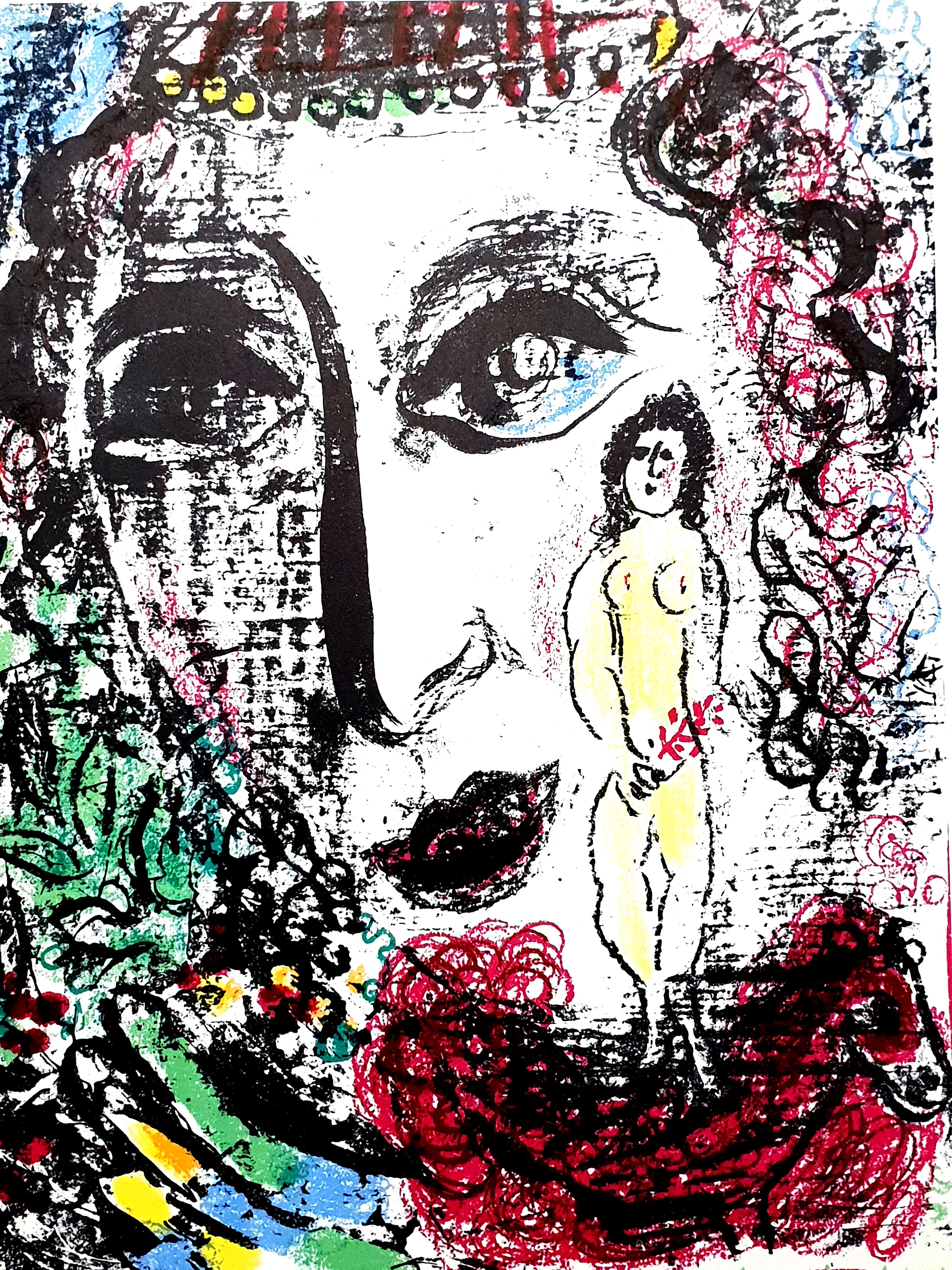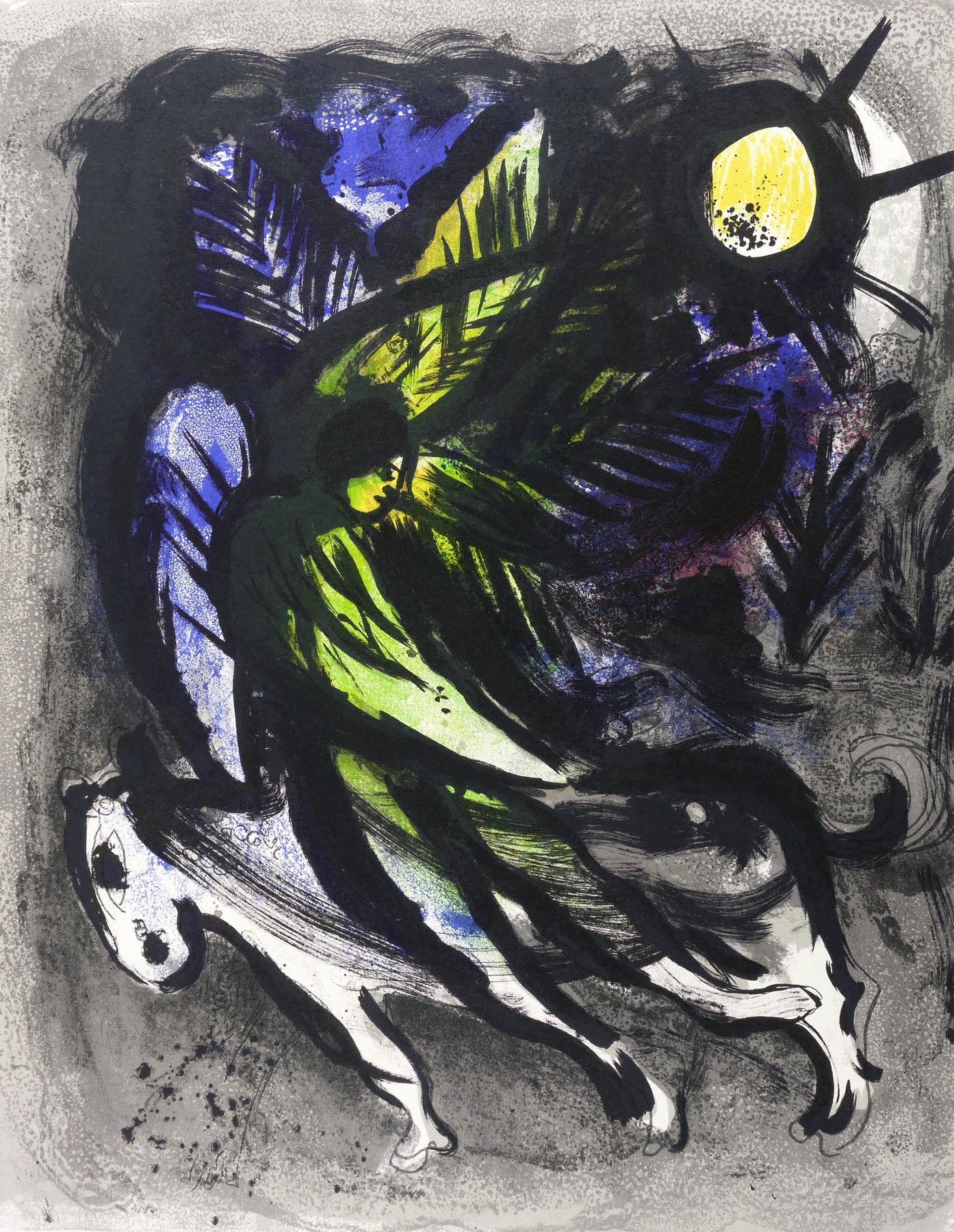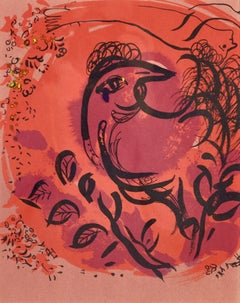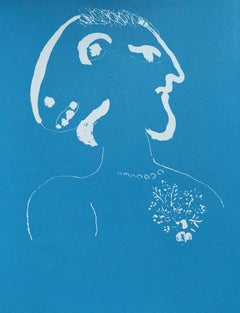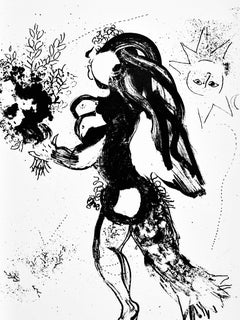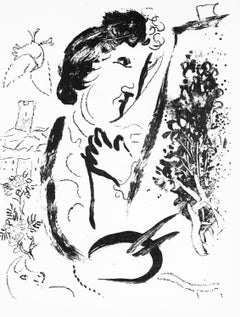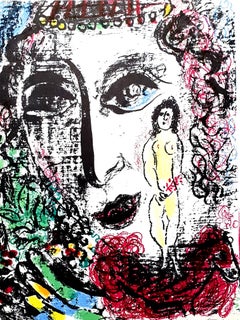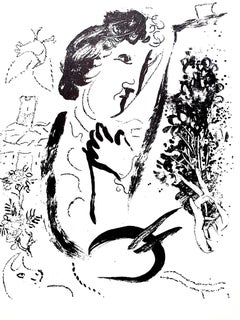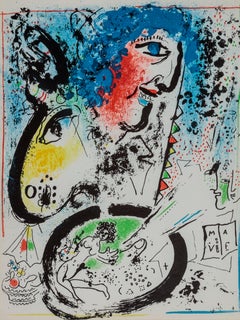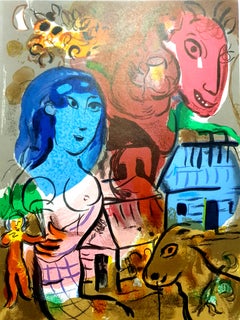This exquisite lithograph by Marc Chagall (1887–1985), titled Sans titre (Untitled), from the album The Lithographs of Chagall, Volume III, originates from the 1969 edition published by Boston Book and Art Shop, Inc., Boston, and printed by Mourlot Freres, Paris, 1969. This luminous composition exemplifies the poetic symbolism, emotional depth, and spiritual lyricism that define Chagall’s mature work. Sans titre evokes a timeless dreamscape of color and form—floating figures, celestial harmonies, and the subtle interplay of memory and imagination. The image captures Chagall’s lifelong dialogue between the visible and the invisible, the earthly and the divine, and stands as a testament to his ability to merge emotion, fantasy, and painterly precision into one radiant vision.
Executed as a lithograph on velin paper, this work measures 12.216 x 9.875 inches (31.03 x 25.08 cm). Unsigned and unnumbered as issued. The edition exemplifies the exceptional craftsmanship of the Mourlot Freres atelier, renowned for its decades-long collaboration with Chagall and its unparalleled technical mastery in fine art lithography.
Artwork Details:
Artist: Marc Chagall (1887–1985)
Title: Sans titre (Untitled), from The Lithographs of Chagall, Volume III, 1969
Medium: Lithograph on velin paper
Dimensions: 12.216 x 9.875 inches (31.03 x 25.08 cm)
Inscription: Unsigned and unnumbered as issued
Date: 1969
Publisher: Boston Book and Art Shop, Inc., Boston
Printer: Mourlot Freres, Paris
Catalogue raisonne references: Chagall, Marc, et al. The Lithographs of Chagall, Volume IV, 1969–1973. Crown Publishers, Inc., 1974, illustration 391. Chagall, Marc, et al. Marc Chagall: Catalogue Raisonne Des Livres Illustres. P. Cramer ed., 1995, illustration 77.
Condition: Well preserved, consistent with age and medium
Provenance: From the album The Lithographs of Chagall, Volume III, published by Boston Book and Art Shop, Inc., Boston, 1969
Notes:
Excerpted from the album, This work produced by Andre Sauret and Fernand Mourlot in collaboration with Charles Sorlier was printed in 1969. The reproductions were printed on the presses of Draeger Freres, and the original lithographs on the presses of Mourlot Freres.
About the Publication:
The Lithographs of Chagall, Volume III, published in 1969 by Boston Book and Art Shop, Inc., Boston, continues the monumental series devoted to Marc Chagall’s extraordinary achievements in the medium of lithography. Directed by Fernand Mourlot and Andre Sauret, and realized in collaboration with Charles Sorlier, the volume presents a collection of original lithographs that exemplify Chagall’s mastery of color, composition, and emotion. The works from this period reveal a serene and mature artistic vision, where biblical imagery, folkloric scenes, and symbols of love and faith merge into radiant harmony. Each lithograph attests to the unique creative partnership between Chagall and Mourlot Freres, whose skillful printing preserved the artist’s chromatic brilliance and delicate painterly effects. This volume, part of the definitive five-volume catalogue of Chagall’s lithographic oeuvre, stands as both an artistic milestone and a technical triumph—an enduring record of the artist’s imagination transformed into light and color through the lithographic process.
About the Artist:
Marc Chagall (1887–1985) was a Belarus-born French painter, printmaker, and designer whose visionary imagination, radiant color, and deeply poetic symbolism made him one of the most beloved and influential artists of the 20th century. Rooted in the imagery of his Jewish heritage and the memories of his childhood in Vitebsk, Chagall’s art wove together themes of faith, love, folklore, and fantasy with a dreamlike modern sensibility. His unique style—merging elements of Cubism, Fauvism, Expressionism, and Surrealism—defied categorization, transforming ordinary scenes into lyrical meditations on memory and emotion. Influenced by Russian icon painting, medieval religious art, and the modern innovations of artists such as Pablo Picasso, Henri Matisse, and Georges Braque, Chagall developed a profoundly personal visual language filled with floating figures, vibrant animals, musicians, and lovers that symbolized the transcendent power of imagination and love. During his early years in Paris, he became an integral part of the Ecole de Paris circle, forming friendships with Amedeo Modigliani, Fernand Leger, and Sonia Delaunay, and his creative spirit resonated with that of his peers and successors—Alexander Calder, Alberto Giacometti, Salvador Dali, Joan Miro, Wassily Kandinsky, Marcel Duchamp, and Man Ray—artists who, like Chagall, sought to push the boundaries of perception, emotion, and form. Over a prolific career that spanned painting, printmaking, stained glass, ceramics, and stage design, Chagall brought an unparalleled poetic sensibility to modern art, infusing even the most abstract subjects with human warmth and spiritual depth. His works are held in the most prestigious museums around the world, including the Museum of Modern Art, the Centre Pompidou, the Tate, and the Guggenheim, where they continue to inspire generations of artists and collectors. The highest price ever paid for a Marc Chagall artwork is approximately $28.5 million USD, achieved in 2017 at Sotheby’s New York for Les Amoureux (1928).
Marc Chagall Sans titre, Chagall Mourlot Freres, Chagall Andre Sauret, Chagall Boston Book and Art Shop, Chagall 1969 lithograph, Chagall velin, Chagall collectible print, Chagall modernist lithograph.
